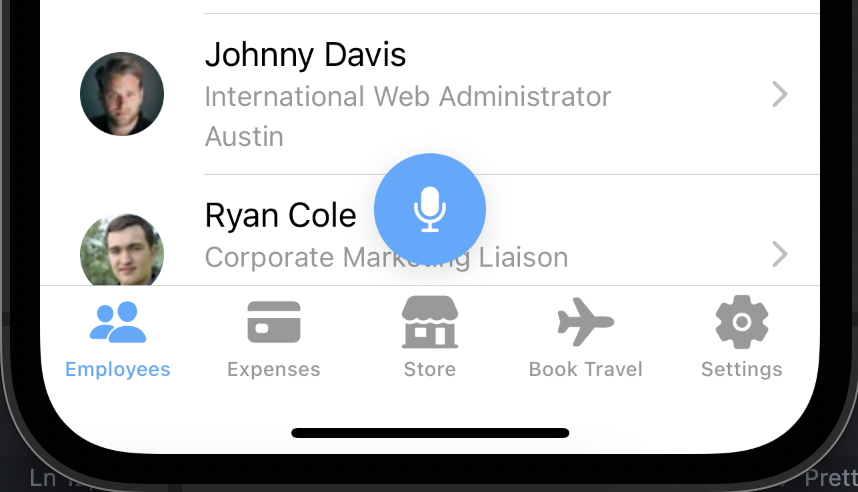Voice Communications with Ionic
Build voice and AI-powered conversational experiences using drop-in predictions and translation features for Ionic Multi-Experience apps.

Getting Started#
Follow the AWS Amplify Predictions guide to configure the Predictions API in your Ionic app.
Adding Voice Input UI#
To create a typical voice-input UI with a persistent microphone record button, add an Ionic Fab control to the desired page:
<ion-fab horizontal="center" vertical="bottom" slot="fixed"> <ion-fab-button (pointerdown)="startVoiceCapture()" (pointerup)="endVoiceCapture()"> <ion-icon name="mic"></ion-icon> </ion-fab-button> </ion-fab>Capturing Voice Input#
Next, add the methods to your page class to start and stop voice capture:
async startVoiceCapture() { const constraints = { video: false, audio: true };
try { this.stream = await navigator.mediaDevices.getUserMedia(constraints); } catch (error) { throw new Error(` MediaDevices.getUserMedia() threw an error. Stream did not open. ${error.name} - ${error.message} `); }
this.recorder = new window.MediaRecorder(this.stream);
this.recorder.addEventListener('dataavailable', async ({ data }) => {
try { const fullText = await Predictions.convert({ transcription: { source: { data }, // language: "en-US", // other options are "en-GB", "fr-FR", "fr-CA", "es-US" }, }).then(({ transcription: { fullText } }) => setResponse(fullText))
// Process the text } catch (e) { console.error('Unable to convert speec', e); throw e; } });
this.recorder.start(); return this.recorder; }
async endVoiceCapture() { this.recorder?.stop(); this.stream.getTracks().forEach((track) => track.stop()); }Convert Audio to Text#
To Convert audio to text, use the Predictions.convert API as shown above:
const fullText = await Predictions.convert({ transcription: { source: { bytes }, // language: "en-US", // other options are "en-GB", "fr-FR", "fr-CA", "es-US" },});Resources#
See the Ionic Multi-experience Demo for an example voice-driven UI experience.